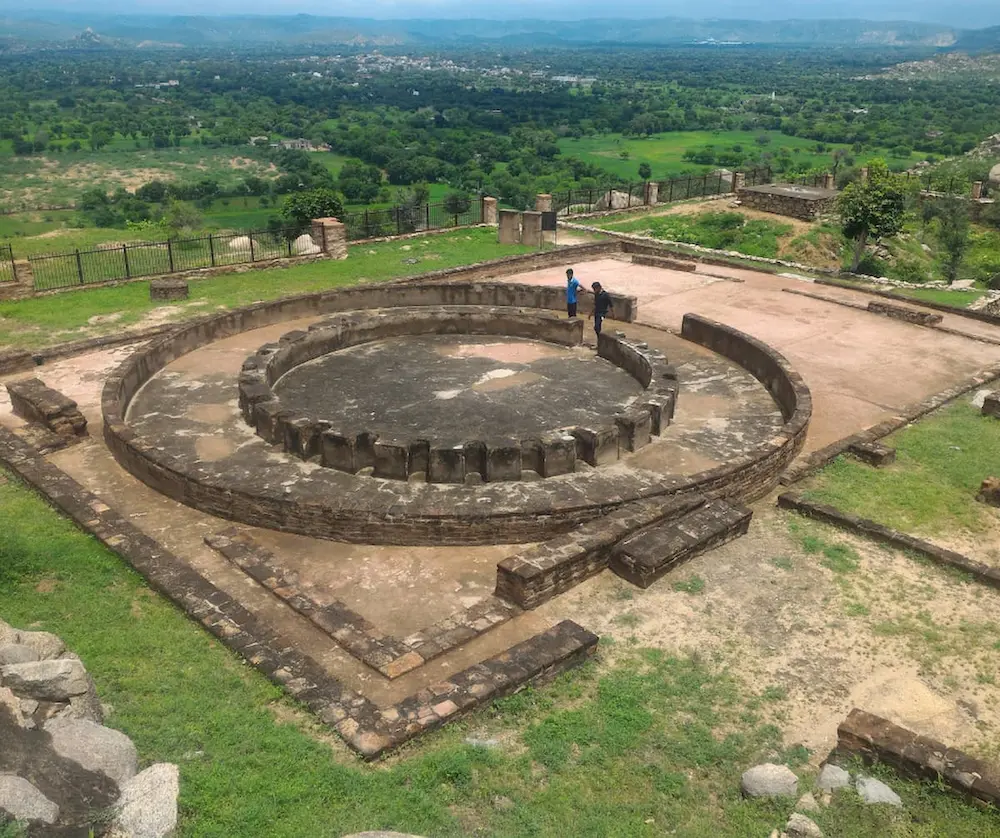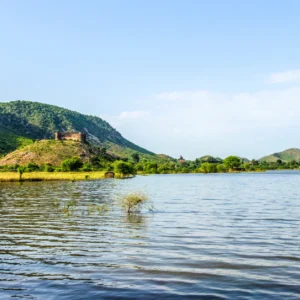Nestled in the heart of Rajasthan, Alwar District is a treasure trove of history, culture, and architectural wonders. Among its many jewels lies the ancient town of Viratnagar, a place steeped in mythology and history, offering a glimpse into the rich tapestry of India’s past. Join me on a virtual journey as we uncover the secrets and splendours of Viratnagar.
Structure Of Python Stone: Natural Rock Formation
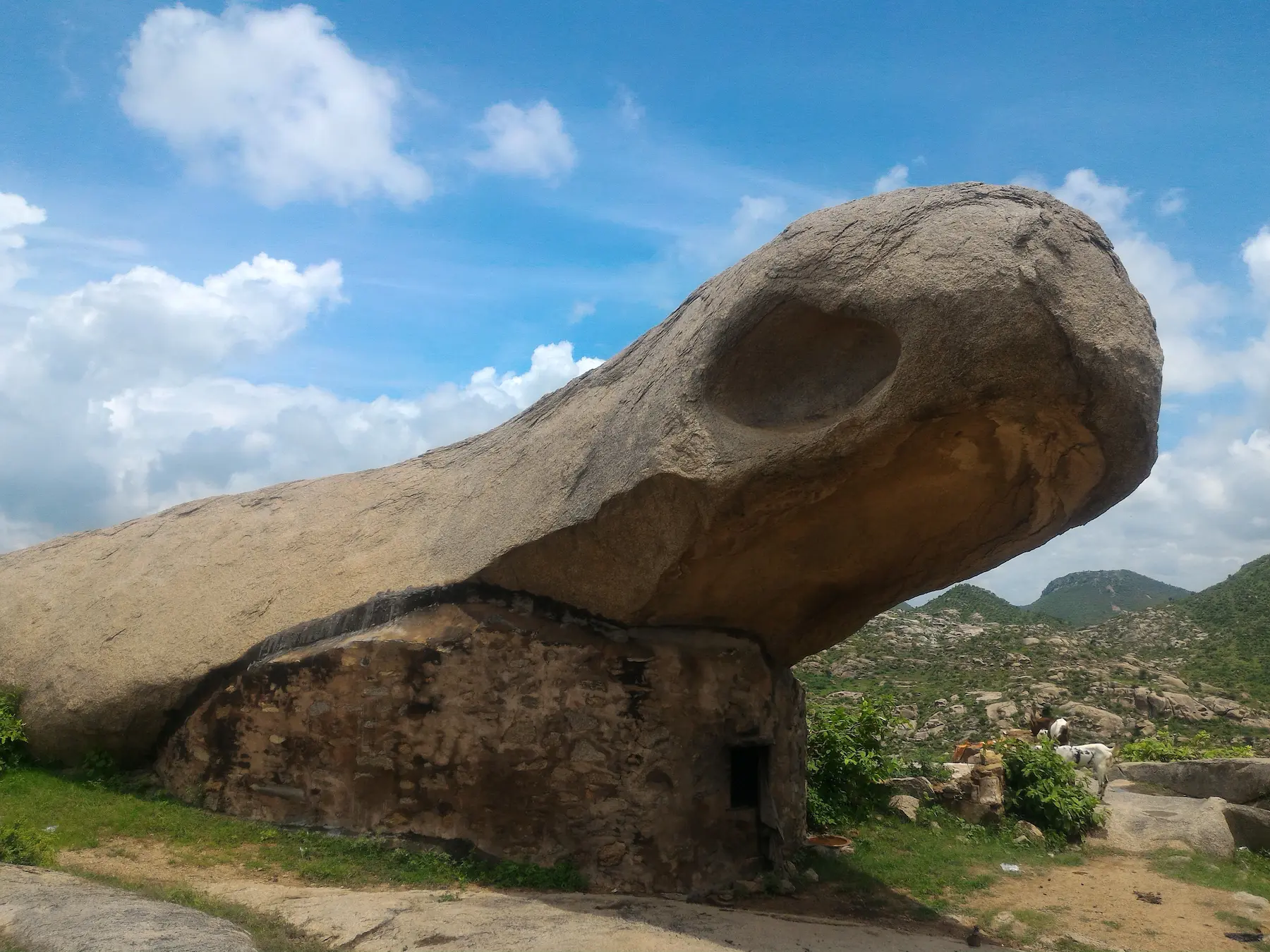
Image Credits : Creative Common
In the scenic landscape of Viratnagar, Rajasthan, the Python Stone stands as a remarkable natural wonder. This unique geological formation captivates visitors with its striking resemblance to a coiled python. The stone’s intricate curves and winding shape mimic the sinuous form of the giant serpent, creating an awe-inspiring sight.
The Python Stone is not just a testament to the artistic prowess of nature but also a symbol of the geological history of the region. Over millennia, natural forces have sculpted this rock into its current form, making it a point of interest for geology enthusiasts and nature lovers alike.
Visitors to Viratnagar can marvel at the Python Stone’s grandeur, explore the surrounding landscapes, and immerse themselves in the natural beauty that characterizes this part of Rajasthan. Whether you are a keen geologist, a nature enthusiast, or simply someone seeking a unique travel experience, the Python Stone offers a glimpse into the wonders of the natural world.
Lost in Time: Rock design of Bairat
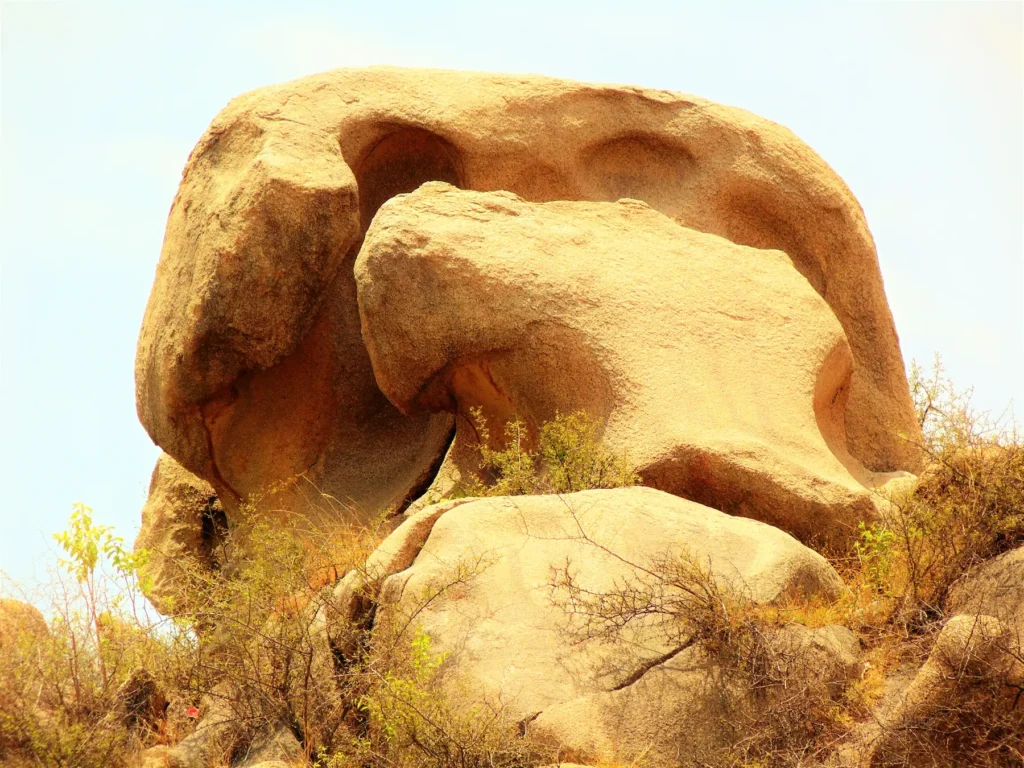
Image Credits : Creative Common
The rock-cut architecture of Bairat in Rajasthan is a significant historical and archaeological site. Bairat, also known as Viratnagar, was once the capital of the ancient Matsya Kingdom. The rock-cut structures here, particularly the Ashokan edicts, showcase the spread of Buddhism during the Mauryan period under Emperor Ashoka’s reign. These inscriptions, etched into the rock surfaces, provide insights into Ashoka’s efforts to propagate the teachings of Buddhism and his administrative policies. The rock-cut architecture of Bairat in Rajasthan is a significant historical and archaeological site. Bairat, also known as Viratnagar, was once the capital of the ancient Matsya Kingdom. The rock-cut structures here, particularly the Ashokan edicts, showcase the spread of Buddhism during the Mauryan period under Emperor Ashoka’s reign. These inscriptions, etched into the rock surfaces, provide insights into Ashoka’s efforts to propagate the teachings of Buddhism and his administrative policies.
Architectural Marvels
Viratnagar boasts an impressive array of architectural marvels that testify to its glorious past. The most iconic among them is the Bairat Temple, dedicated to Lord Shiva. Dating back to the 9th century, this temple is a masterpiece of Rajasthani architecture, adorned with intricate carvings and sculptures that depict scenes from Hindu mythology.
Another highlight is the Buddhist stupa at Viratnagar, which dates back to the Mauryan period. This ancient monument is a symbol of the town’s rich Buddhist heritage and serves as a reminder of its importance as a centre of trade and commerce during ancient times.
Cultural Heritage
Viratnagar is not just a repository of ancient monuments but also a vibrant centre of culture and traditions. The town comes alive during festivals like Diwali and Holi, when the streets are adorned with lights and colours, and the air is filled with the sounds of music and laughter.
One of the most unique cultural experiences in Viratnagar is the traditional folk dance performances that take place during special occasions. These captivating performances, accompanied by melodious music, offer a glimpse into the rich cultural heritage of Rajasthan.
Ancient Buddhist Temple in Viratnagar
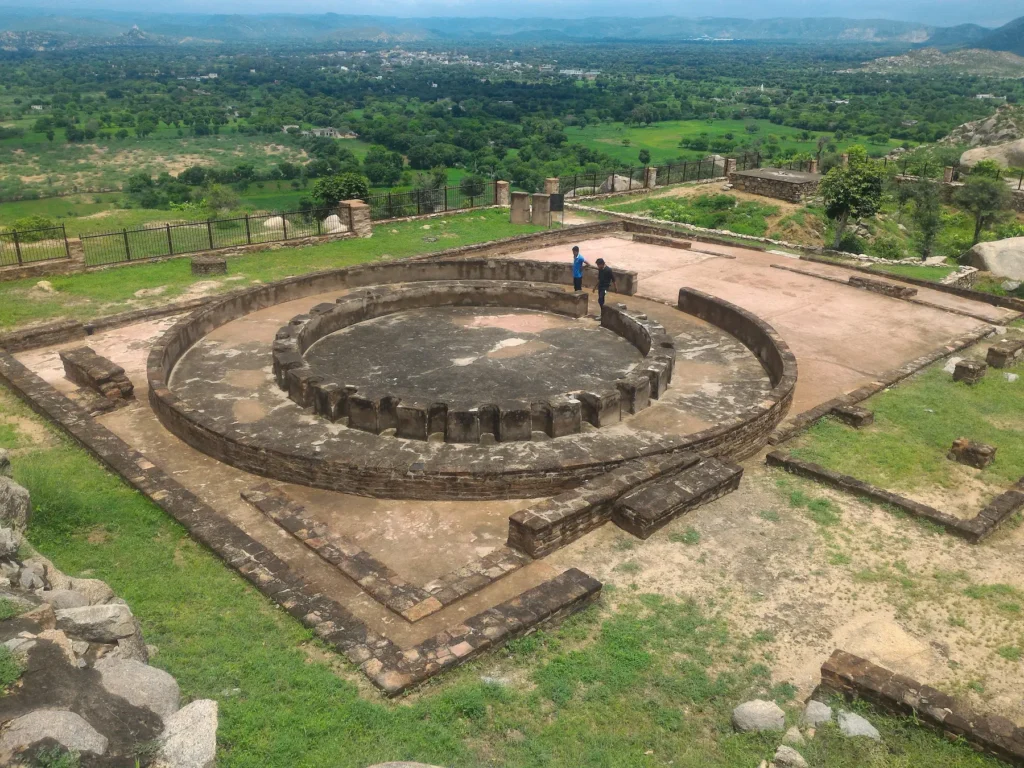
Image Credits : Creative Common
The historical town of Viratnagar in Rajasthan, the ancient Buddhist temple is a serene sanctuary reflecting the region’s rich spiritual heritage. Viratnagar, once known as Bairat, was a significant centre for Buddhism during the reign of Emperor Ashoka in the 3rd century BCE. The temple complex, marked by its austere yet elegant architecture, features the remnants of ancient stupas, viharas (monastic dwellings), and intricately carved pillars, offering a glimpse into the artistic and cultural prowess of the Mauryan era. The most notable structure is the Bairat Stupa, a solid hemispherical dome believed to enshrine relics of the Buddha, making it a revered site for pilgrims.
Exploring Nature’s Bounty
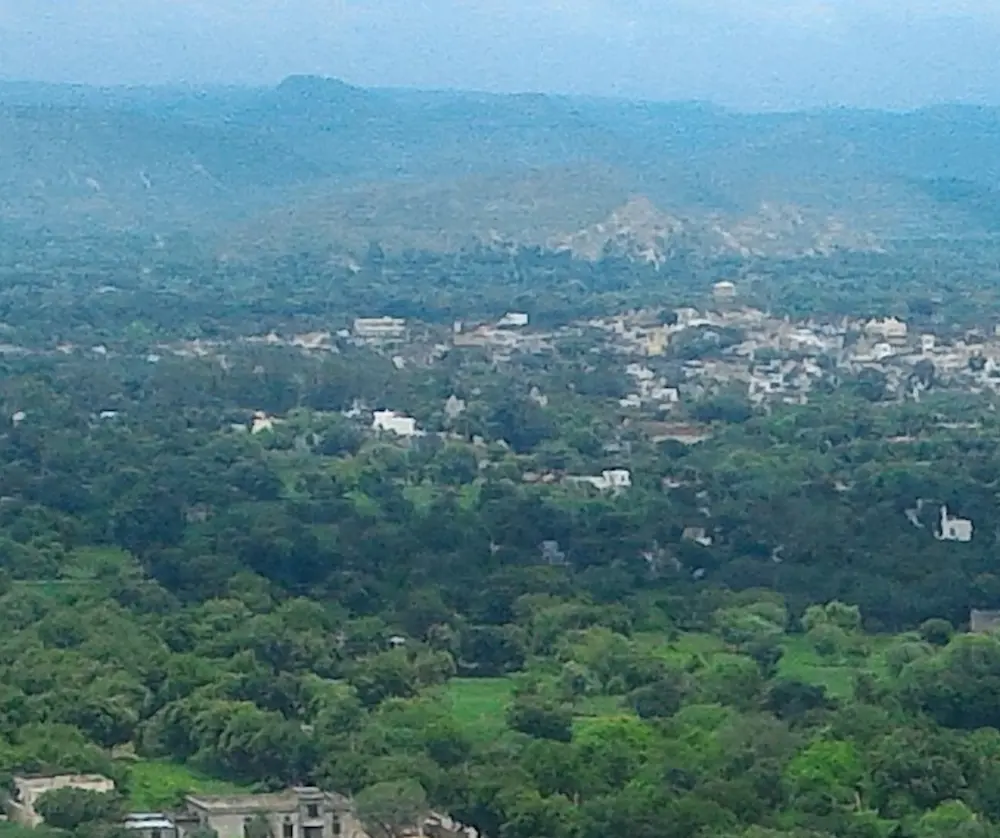
Image Credits : Creative Common
Beyond its historical and cultural treasures, Viratnagar is also blessed with natural beauty. The town is surrounded by lush greenery and scenic landscapes, making it an ideal destination for nature lovers and outdoor enthusiasts.
The nearby Sariska Tiger Reserve is a paradise for wildlife enthusiasts, home to a diverse range of flora and fauna, including the majestic Bengal tiger. A safari through the reserve offers a thrilling opportunity to spot these magnificent creatures in their natural habitat.
Conclusion: A Journey Through Time
Viratnagar is more than just a town; it’s a living chronicle of India’s glorious past and a testament to the enduring spirit of its people. From ancient temples to bustling bazaars, this historic town offers a fascinating blend of history, culture, and natural beauty that is sure to captivate the hearts of all who visit. So, the next time you find yourself in Alwar District, don’t forget to explore the timeless wonders of Viratnagar.
Let’s venture together into Sariska’s Historic Marvel Viratnagar, preserving their tales for tomorrow. Join the journey, and Book your stay at a wildlife lodge and Resort in Sariska for an unforgettable experience that seamlessly weaves together history, culture, and modern comfort.
Featured Images Credit : Creative Commons

